Picture this: you’re strolling through the enchanting forests of North America, and suddenly, out of the shadows emerges an awe-inspiring creature. The mighty moose is towering above the surrounding flora, with its massive body and impressive antlers. These magnificent beings are renowned for their imposing size and weight, which have captivated human curiosity for centuries. Let’s dig deeper into moose size and weight.
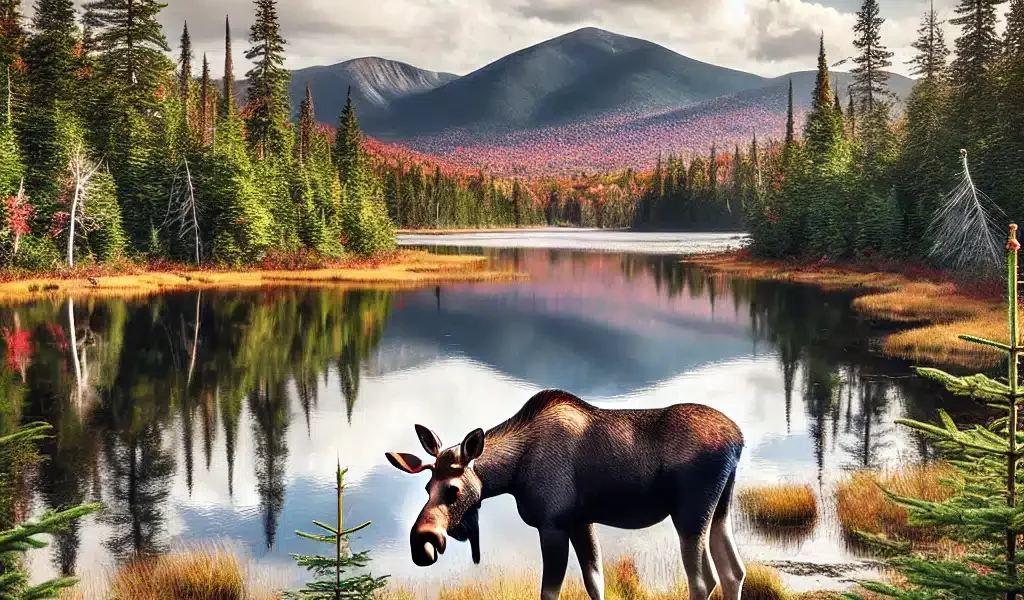
Fascinating Facts about Moose Size and Weight
It’s no secret that moose are true giants among mammals. They stand at an average height of six to seven feet at the shoulder. They easily dwarf most other creatures in their habitat.
But what truly astounds is their remarkable body mass. A fully grown bull can weigh anywhere between 1,200 and a staggering 1,600 pounds!
To put it into perspective, that’s like having a small car roaming through the woods. But hold on to your hats because there’s more!
You might assume that such colossal proportions are exclusive to males, but female moose (known as cows) can also reach weights ranging from 900 to 1,300 pounds. It’s safe to say that these gentle giants have made it quite clear who rules these wooded realms.
Understanding Moose Size and Weight
You might wonder why all this talk about moose size and weight matters beyond mere fascination. Well, dear reader, understanding these physical dimensions is crucial for effective conservation efforts.
As custodians of our planet’s precious wildlife resources, we must comprehend how moose size and weight variations impact their survival by gathering knowledge about the factors influencing growth patterns in different populations or assessing environmental influences on moose size.
Characteristics such as habitat quality and food availability, for starters, can be improved by taking informed steps to protect their habitats, ensure sustainable populations, and maintain the delicate balance of our ecosystems.
So, join us on this journey as we delve into the compelling details of moose size and weight. Let’s uncover these majestic creatures’ wonders and consider how we can safeguard their future in our ever-changing world.
Moose Size: General Overview
The Majestic Height of Adult Moose
When it comes to moose, size matters! Standing tall on their slender yet sturdy legs, adult moose are impressive. On average, these magnificent creatures reach 6 to 7 feet (1.8 to 2.1 meters) at their shoulders.
Imagine a massive animal towering over you like a gentle forest giant! Their long, graceful legs and elegantly curved necks make this remarkable height even more astonishing.
Comparing Moose with Other Large Animals
Now that we have marveled at the height of the mighty moose let’s have fun comparing them to other large animals that roam our planet. Regarding sheer size, horses and elephants are often used as points of comparison. Interestingly, while horses may be considerably shorter than moose in shoulder height, they still exhibit similar body mass due to their compact build.
Conversely, elephants are renowned for being the largest land animals alive today; however, regarding overall body dimensions and weight, adult moose rival elephants in certain aspects!
It’s truly mind-boggling how nature manages to create such diverse giants. Keep reading as we delve deeper into the fascinating world of moose size and weight!
Moose Weight: Adult Bulls vs. Cows
Distinctive weight differences between male and female moose
There’s a noticeable disparity between adult bulls and cows regarding moose weight. Bulls, the alpha males of the moose world, tend to be much larger and heavier than their female counterparts.
On average, a mature bull can weigh anywhere between 1,200 to 1,600 pounds (544 to 726 kilograms). These magnificent creatures can even reach an astonishing weight of up to 1,800 pounds (816 kilograms), sometimes even more!
In contrast, adult cows are relatively lighter, with an average weight ranging from 800 to 1,200 pounds (363 to 544 kilograms). The substantial difference in size between bulls and cows adds a touch of awe-inspiring charm to the moose population.
Factors influencing weight variation within each gender
Within each gender of the moose population, several factors contribute to weight variation. For bulls, genetics play a significant role in determining their size. Moose born from larger parents tend to have greater body mass as adults.
Environmental factors like food availability and habitat quality also impact their growth potential. Moose residing in regions with abundant forage resources generally have higher weights than those with limited food sources.
Likewise, cows’ weight is influenced by similar factors. Genetic predisposition plays a part in determining body size among females as well.
Furthermore, nutrition during pregnancy affects the birth weight of calves and subsequently influences their overall growth trajectory as they mature into adulthood. Understanding these factors that influence weight variation within each gender provides valuable insights for wildlife management strategies to maintain healthy populations of these majestic creatures in their natural habitats.
Factors Influencing Moose Size and Weight
Genetic Factors Affecting Growth Patterns
When it comes to the majestic moose, size does matter. However, the genetic makeup of different moose populations plays a significant role in determining their physical dimensions.
Like humans, moose have unique genetic codes that determine their growth patterns. These genetic factors can influence how tall or heavy a moose can grow.
For instance, some populations may exhibit larger body mass due to certain genetic variations promoting growth. On the other hand, there may also be populations where smaller-sized moose are more common due to specific genetic traits that limit their potential size.
Environmental influences on moose size
Nature’s pantry greatly impacts a moose’s overall size and weight. The habitat quality and food resources in a particular environment are crucial in determining how big a moose can grow.
High-quality habitats typically provide an abundance of nutrient-rich vegetation that fuels optimal growth for these magnificent creatures. Moose require copious amounts of plant matter to sustain their large bodies, consuming up to 40 pounds of vegetation daily during the summer months!
Lush habitats with diverse plant species offer the necessary nutrients for proper development and contribute to larger-sized individuals within a population. Conversely, areas with limited food resources or poor-quality habitats may result in stunted growth and smaller-sized individuals struggling to reach their full potential.
By understanding the genetic factors affecting growth patterns and the environmental influences on size and weight, we gain valuable insights into how these incredible animals adapt and thrive within their respective populations. This knowledge is essential for conservation efforts to preserve adequate habitats and maintain healthy gene pools so future generations can continue marveling at these magnificent giants of our forests.
Moose Antlers: An Indicator of Size and Dominance
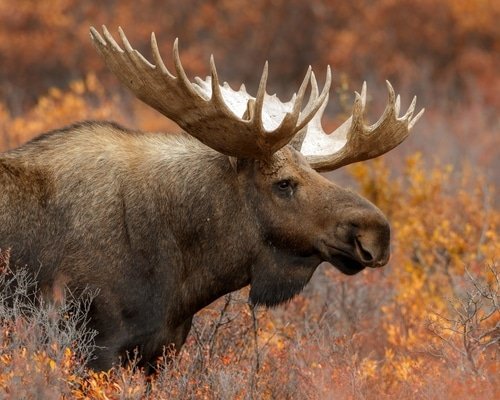
Relationship between antler size, body size, and social hierarchy
When it comes to moose, bigger is often better. The majestic antlers adorning a male moose’s head serve as a visual representation of its size, strength, and dominance.
These magnificent appendages are not just for show; they are crucial in establishing the social hierarchy among males during the mating season. The general rule is simple: the larger the moose’s body size, the bigger its antlers tend to be.
This correlation can be attributed to testosterone levels, which influence both antler growth and overall physical dimensions in males. It’s fascinating to witness how male moose use their impressive antlers to assert dominance over competing males.
Role of antlers in attracting mates during the rutting season
Antlers are not only symbols of dominance but also powerful tools for attracting potential mates during the rutting season. Moose engage in intense battles, clashing their massive antlers against each other, creating echoing cracks throughout the wilderness. These contests determine which males will have access to females for mating purposes.
The resonating thuds produced by these clashes can be heard from miles away, acting as a powerful audio advertisement for interested females seeking strong and healthy partners. It’s remarkable how female moose are naturally drawn towards males with formidable antlers since they indicate superior genetic traits that ensure healthier offspring.
There is an undeniable charm in observing these captivating rituals where nature reveals its version of courtship through grand displays of power and beauty. The intricate connection between body size, dominant behavior, and reproductive success showcases how crucial understanding moose antler dynamics is when comprehending these magnificent creatures’ behavior patterns during breeding seasons.
Moose Calves: Growth Patterns from Birth to Adulthood
Initial weight at birth and rapid growth during the first year
Moose calves, oh boy, they start as these adorable little bundles of fur! At birth, a moose calf typically weighs around 30 to 35 pounds (13 to 16 kilograms). That may not seem like a lot, but remember, they are newborns.
However, don’t be fooled by their small size because moose calves grow incredibly fast during their first year. They can double or even triple their weight within the first few months alone!
By the time they reach their first birthday, a healthy moose calf can weigh anywhere between 300 to 400 pounds (136 to 181 kilograms). Talk about some serious growth spurt!
Factors influencing calf survival rates and long-term growth potential
Survival in the wild can be tough for moose calves. Apart from predators like wolves and bears lurking around, certain factors influence their survival rates and long-term growth potential. One crucial factor is nutrition availability.
Moose calves heavily rely on nutrient-rich foods like aquatic vegetation and high-quality forage for proper development. The abundance of such food sources greatly affects their overall health and well-being.
Additionally, climate conditions also play a role; harsh winters or droughts can impact food availability for the mother and her calf. Other factors include disease susceptibility and genetic traits inherited from their parents that might affect their ability to thrive in different environments.
Moose Size Records: Unveiling the Giants
Largest recorded height of a bull moose
One cannot help but be in awe when considering the towering presence of a majestic bull moose. While these magnificent creatures are generally known for their impressive size, there have been instances where certain individuals have surpassed all expectations. The largest recorded height ever documented for a bull moose stands at an astonishing 7 feet and 4 inches at the shoulder!
This colossal specimen, aptly earning the title of “Goliath,” possessed an extraordinary stature that commanded attention and inspired reverence. Such remarkable heights demonstrate the potential grandeur that these gentle giants can attain.
Heaviest recorded weight of a bull or cow moose
When discussing the weight of moose, it is impossible not to be astounded by their immense bulk. These magnificent beings possess an unparalleled ability to amass significant body mass throughout their lives. The heaviest recorded weight ever documented for a bull moose is an astounding 1,800 pounds!
Just imagine the sheer power and strength exuded by this colossal creature as it navigated its way through dense forests. Not to be outdone, female moose, known as cows, can also reach staggering weights, with some remarkable individuals tipping the scales at over 1,200 pounds.
These unbelievable figures testify to how formidable these creatures are in terms of physical dimensions. The existence of such exceptional records showcases the incredible potential that lies within each member of this species.
It serves as a reminder that within nature’s realm, there are always extraordinary outliers who defy expectations and push boundaries regarding size and weight. These records also emphasize the importance of preserving habitats and protecting these magnificent animals so future generations can continue to witness such awe-inspiring spectacles firsthand.
Interesting Facts About Moose Size And Weight
Rare cases of abnormally large or small-sized moose
When it comes to moose, size matters. While the average moose may stand tall and weigh impressively, nature occasionally throws in some surprises.
In some rare instances, lucky observers have encountered giants amongst the moose population. These colossal creatures can reach astonishing heights that surpass the norm by several feet, towering over their counterparts like true monarchs of the forest.
On the flip side, there are also cases where some moose are significantly smaller than expected. These petite individuals may possess a certain charm and manage to hold their own in a world dominated by larger peers.
Comparisons with extinct species like the Irish Elk
To truly grasp the magnificence of a full-grown moose’s physical dimensions and body mass, let’s take a moment to compare them with extinct species that once roamed our planet. One such fascinating creature is the Irish Elk, which shares some similarities with modern-day moose but boasts even more extraordinary proportions. Imagine an Irish Elk standing up to seven feet at its shoulder height – a staggering sight!
The antlers alone could span up to twelve feet from tip to tip, making even the grandest bull moose antlers seem almost modest in comparison. While these awe-inspiring giants may no longer walk among us today, they testify to nature’s capacity for creating beings of truly epic proportions.
By exploring these interesting facts about rare cases of abnormally large or small-sized moose and comparing them with extinct species like the Irish Elk, we gain a deeper appreciation for how remarkable these majestic animals are. They remind us that nature always has surprises in store and that within our vast world, there will always be room for creatures that defy expectations and leave us in awe of their size and beauty.
The Significance Of Understanding Moose Size And Weight In Conservation Efforts
Impact on Moose Population Management
Understanding moose size and weight is crucial for effective conservation efforts. By studying these physical dimensions, wildlife biologists can assess moose populations’ overall health and well-being.
Monitoring changes in size and weight can provide valuable insights into the availability and quality of food resources and the overall habitat conditions. This information allows conservationists to make informed decisions regarding population management, such as implementing measures to ensure an adequate food supply or reducing hunting quotas in areas where moose are struggling.
Estimating Ecosystem Health
Moose play a vital role within their ecosystems, acting as consumers and regulators. Their large body mass requires substantial vegetation, making them key herbivores influencing plant species composition and distribution.
Scientists can gain insights into broader ecosystem dynamics by understanding moose size and weight variations across different regions or timeframes. Changes in moose body mass might indicate shifts in vegetation availability or quality, which can have cascading effects on other animal species that depend on similar resources.
Predicting Climate Change Impacts
Climate change poses significant challenges for wildlife populations worldwide, including moose. The physical dimensions of these majestic creatures can serve as indicators of climate change impacts within their habitats.
For example, if moose become smaller due to limited food availability caused by changing weather patterns or increased heat stress affecting their reproductive success, it could suggest long-term shifts in environmental conditions. By monitoring moose size and weight changes over time, scientists can gather valuable data to help predict future climate change impacts on various species.
Conclusion
Understanding the size and weight of moose is not merely an exercise in gathering facts; it holds immense significance for conservation efforts to preserve these magnificent creatures and their ecosystems. By closely studying the physical dimensions of moose, we can gain valuable insights into population health, ecosystem dynamics, and climate change impacts.
Armed with this knowledge, we can develop proactive strategies to mitigate threats and ensure a sustainable future for these iconic animals. Let’s cherish the beauty of moose and work together to protect their habitats for generations to come.

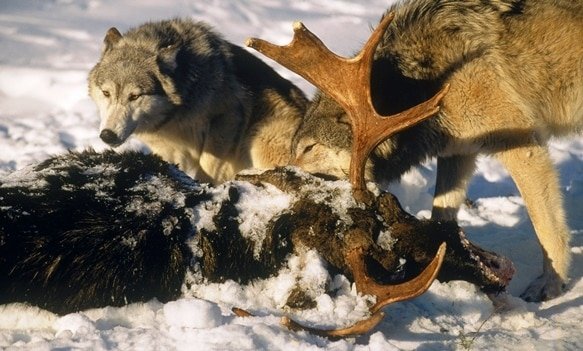
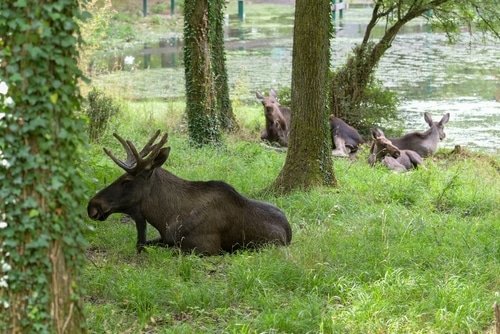
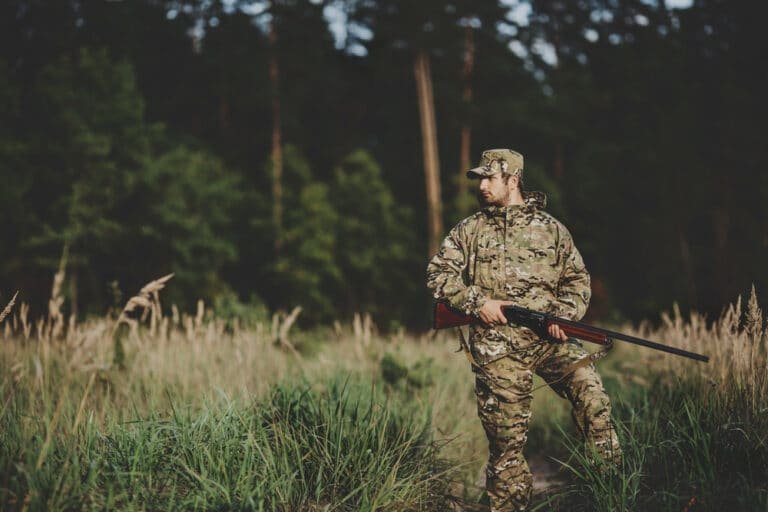

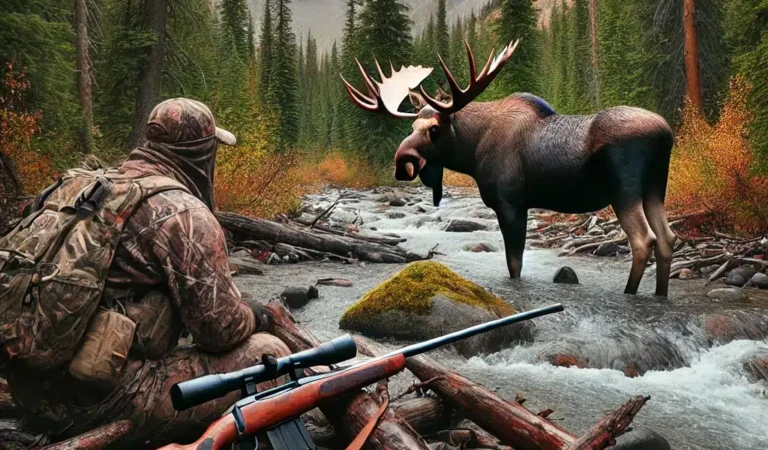
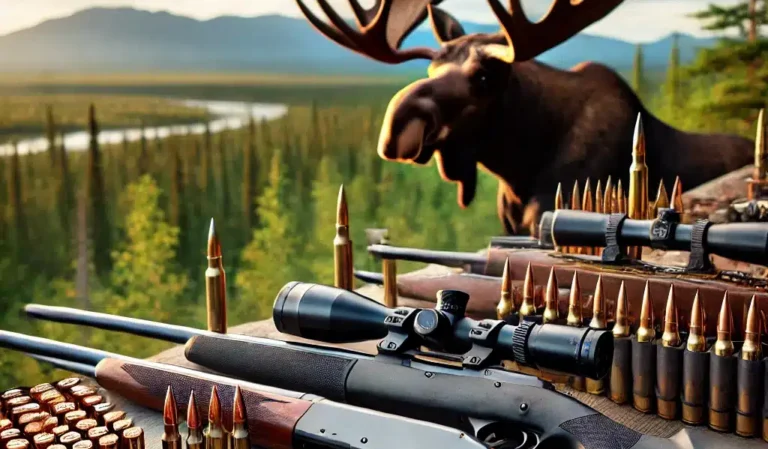
На этом сайте можно найти информацией о системах видеонаблюдения, их видах и особенностях. Здесь размещены полезные сведения о подборе оборудования, его установке и конфигурации.
видеонаблюдение